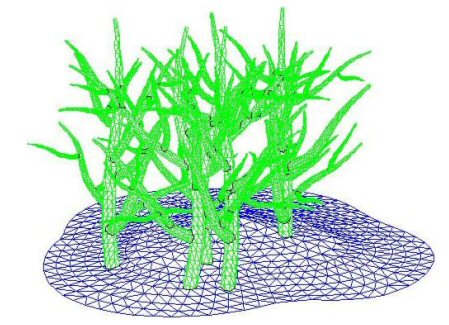2. To compare results with classical approach and commercial software.
3. To perform adaptive analysis using solid 3D elements.
4. To develop graphical tools for input/output purposes.
¡@
Robust and efficient hybrid stress hexahedral elements guarantee that solutions be obtained by a fairly coarse mesh. The most important aspect of using only hexahedral elements rather than a mixture of beam, plate and shell elements is, however, the complete removal of the difficulty in matching rotational and translational degrees of freedom, which is inevitable if different types of elements are used in the structure. Another difficulty for structural engineers is to judge what kind of structural members beam, plate, shell, etc. should be used for various parts of the structure in the idealization. Unfortunately, there are no clear definitions for beams, plate, shell and non-flexural components in general based solely on geometrical aspect ratios. The use of one type of high-performance universal element in true physical dimensions for all kinds of structural members and other possible new structural forms definitely offers a great advantage.
A pre-processor has been developed for the generation of hexahedral meshes for the analysis of transfer plate structures. Typical benchmark structural forms were analysed and compared with other approaches.
More complicated building structures were analysed. Detailed comparisons are made on deflection, reaction forces and member forces. 12-node and 18-node hybrid stress elements for shell analysis have been applied to building structures. A computer program for the generation of floor plan of building structures has been completed. A robust algorithm for mesh generation over curved surfaces based on surface intersection has been developed.
A transition 3D element is under development to facilitate adaptive analysis using solid elements. An automatic mesh generation procedure taking into account of these new features is underway. Derivation of engineering quantities such as deflection, moment and forces from stress values will be addressed.

Solid element mode

Beam-wall model

The intersection of triangulate surfaces of trees
A high performance computer will be very helpful in the large amount of numerical test runs for calibration and verification with benchmark examples in the most rigorous manner. Graphics supports are indispensable in the modeling stage and for the presentation of results. More than a million unknowns will be involved in the adaptive refinement analysis, which required large memory support and fast processing machine.